Crepi Insulation Guide
Frequently asked questions
Here you will find the answers to questions we often receive. Is your question not listed? Don’t hesitate and contact us!
1. Crepi and insulation
1.1 What is crepi, decorative plaster or facade plaster?
Crepi, also known as decorative plaster or facade plaster, is a popular finishing material for cladding exterior walls. Suitable for substrates such as concrete, masonry, and brick, crepi can also be combined with insulation materials for improved energy efficiency through external wall insulation.
1.2 How is crepi applied?
The application of crepi involves six detailed steps for a durable and aesthetic result, including preparation, installing corner profiles, applying reinforcement mesh, applying primer, applying crepi, and finishing. This ensures a sleek and moisture-free result.
1.3 What is the difference between mineral crepi and synthetic crepi?
Mineral crepi, made from natural materials such as cement, lime and sand, offers excellent vapour-permeable properties and is ideal for older buildings that are prone to moisture problems. Synthetic crepi, often based on synthetic resin, offers higher waterproofing and is more flexible, making it suitable for areas with high rainfall.
1.4 How do I choose the right color and texture for my crepi facade?
The choice of color and texture of crepi should not only be based on personal preference but also take into account the architectural style of the building and its surroundings. Lighter colors reflect more sunlight and accumulate less heat, while darker colors absorb heat. Textures range from fine to coarse depending on the desired appearance and ease of maintenance.
1.5 What are the advantages of crepi in combination with exterior wall insulation
If you are considering renovating your facade, combining crepi with exterior wall insulation is an excellent choice that offers both functional and aesthetic benefits. This combination is not only a practical solution for energy savings, but also improves the overall appearance and sustainability of your building. Below is a comprehensive overview of the most important benefits:
- Energy savings: By installing insulation under the crepi, you can improve the energy efficiency of a building. Insulation prevents heat from escaping in winter and from entering in summer, reducing heating costs and cooling the building using less energy.
- Improved thermal performance: Insulation under the crepi can improve the thermal performance of the facade and reduce temperature fluctuations inside the building. This can provide a more comfortable living environment and better air quality.
- Sound insulation: Insulation under the crepi can also help reduce noise pollution. It can block outside noise and provide a quieter environment inside the building.
- Protection: Crepi offers protection to the facade of the building against weather influences and pollution. The insulation under the crepi helps to strengthen this protection and protect the building against damage.
In summary, insulation and crepi can work together to protect a building, improve energy efficiency, increase thermal performance, reduce noise pollution and improve aesthetic value. It is therefore a smart investment for the long term and can ensure a more comfortable and sustainable building.
1.6 Is crepi insulating in itself?
Technical adjustments are required for effective application of thick wall insulation with crepi. Our experts recommend a site visit to assess the options specifically for your home.
1.7 Is my home suitable for thick wall insulation?
Technical adjustments are necessary for an effective application of thick wall insulation with crepi. Our experts recommend a site visit to assess the options specifically for your home.
1.8 The benefits of crepi
Crepi is a popular choice for facade finishing that offers both practical and aesthetic benefits. The most important benefits are discussed in detail below:
- Cost savings: Crepi is a popular choice for facade finishing that offers both practical and aesthetic benefits. The most important benefits are discussed in detail below:
- Energy efficiency: By installing insulation under the crepi, the energy efficiency of the building improves. This results in less heat loss in winter and less heat intrusion in summer, which ensures lower heating costs and a more comfortable indoor climate. This energy saving also contributes to the sustainability of the building by reducing CO2 emissions.
- Durability and Protection: Crepi protects the outside of the building against various weather influences such as moisture, wind and UV radiation. This helps prevent structural damage and extends the lifespan of both the facade and the underlying masonry. It is also resistant to algae and fungi, which contributes to lower maintenance requirements and a long-lasting beautiful appearance.
- Accessible Premiums: The installation of crepi in combination with insulation can qualify for various construction and energy saving premiums. This financial support makes it an attractive option for both renovation and new construction projects.
1.9 The disadvantages of crepi
Although crepi offers many advantages, it is important to also be aware of the possible disadvantages in order to make an informed decision:
- Maintenance Requirements: Crepi requires annual maintenance to maintain its aesthetics and integrity. This maintenance can be simple, such as cleaning it with a garden hose, but it is nevertheless a necessary step to keep the facade looking its best. In addition, the application of a protective coating may be necessary to fully protect the facade against moisture ingress.
- Potential Color Change: Under the influence of sunlight and weather conditions, the color of the crepi may fade over time, especially with dark colors. UV rays have a stronger effect on dark surfaces, which can cause them to lean more toward gray. Applying a transparent protective layer may be necessary to preserve the original color for as long as possible.
- Crack formation Risk: Although crepi is relatively elastic and adheres well to various surfaces, incorrect application or extreme weather conditions can lead to crack formation. This risk is minimized by professional installation and the proper use of undercoats and primers.
- Difficult Stain Removal: Due to the texture of crepi, stains and dirt can sometimes be difficult to remove without the proper cleaning agents and techniques. This can lead to higher maintenance costs and the need for specialized cleaning services.
1.10 What are the insulation values that I can expect from crepi in combination with insulation boards?
The insulation value of a combined system of crepi and insulation boards depends on the thickness and type of materials used. In general, a properly executed installation of crepi over insulation boards can significantly increase the R-value, leading to better energy efficiency of the building.
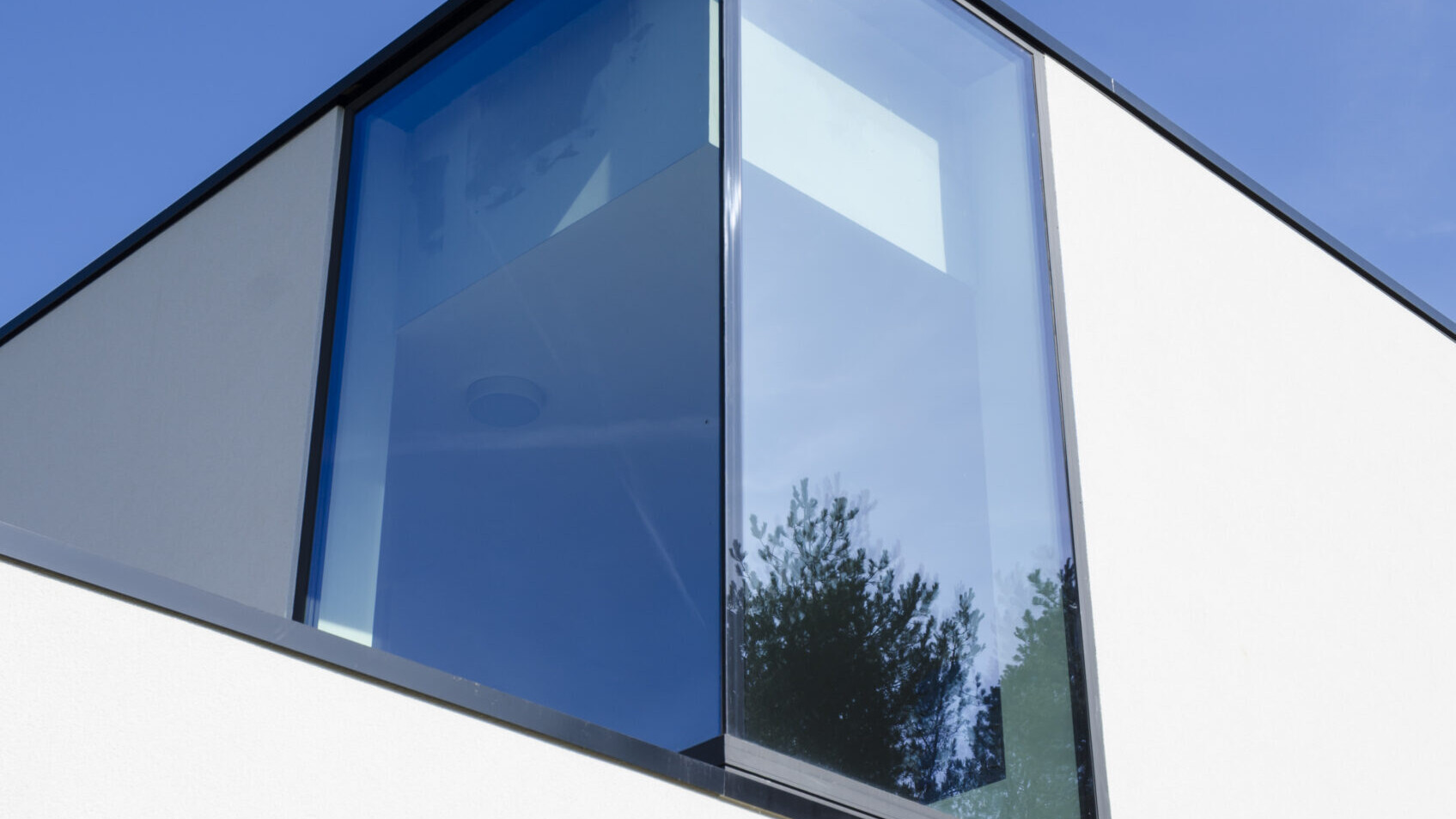
2. Brick slips and insulation
2.1 What are brick slips?
Stone slips are thin slabs of real or artificial stone used to give the exterior of buildings a natural stone look without the need for heavy structural supports. These strips offer a practical solution to improve both the aesthetics and the insulation value of a building. They are ideal for renovation projects where the weight of traditional masonry would be a barrier.
2.2 How are brick slips installed?
The installation of stone slips is a careful process that starts with the preparation of the substrate, which must be clean, dry and stable. A suitable adhesive is then applied to both the strips and the wall for a lasting bond. The strips are precisely placed and aligned for a uniform appearance, followed by grouting, which completes the aesthetic integration with existing structures. The whole is often sealed with a sealer to increase durability and simplify maintenance.
2.3 Can I combine brick slips with facade insulation?
Yes, brick slips can be perfectly combined with facade insulation, which not only increases the aesthetic value but also improves the energy efficiency of the building. The insulation is applied first and then the brick slips are placed over the insulation layer, creating a thermally efficient and visually attractive facade.
2.4 Advantages of brick slips
Brick slips offer many benefits, including:
- Aesthetic Flexibility: They replicate the appearance of natural stone without the limitations of weight and complexity in installation.
- Space efficiency: Due to their thin thickness, brick slips are ideal for upgrading existing facades without increasing the spatial footprint.
- Durability: Stone slips are resistant to weather, UV radiation and pollution, giving them a long lifespan with minimal maintenance requirements.
- Thermal and Acoustic Insulation: When combined with facade insulation, brick slips improve the thermal and acoustic insulation of a building, leading to reduced energy costs and increased comfort.
2.5 Quality comparison with traditional brick?
Brick slips are made from the same materials as traditional bricks and undergo strict quality testing to meet European CE standards. They offer similar properties in terms of durability and resistance to weathering, but with the added benefits of flexible installation and reduced structural stress.
2.6 Are brick slips a sustainable choice for facade cladding?
Yes, brick slips are an extremely durable option for cladding for several reasons:
- Weather resistance: Brick slips can withstand a variety of weather conditions, including rain, wind, and extreme temperature fluctuations, giving them a long life without significant wear and tear.
- Easy to maintain: They require little maintenance compared to other cladding materials. A simple cleaning is enough to maintain their aesthetic appearance for years to come.
- Environmentally friendly: Many stone slips are made from natural or recycled materials, which contributes to their sustainability profile. Furthermore, due to their improved insulation properties, they reduce the ecological footprint of the building.
2.7 Can I integrate LED lighting into my facade covered with brick strips?
Yes, LED lighting can be seamlessly integrated into facades covered with brick strips. This requires careful planning and installation to integrate the lighting without affecting the insulation properties. The result is not only functional, with improved visibility and safety, but can also be aesthetically pleasing, accentuating the architectural features of the building.
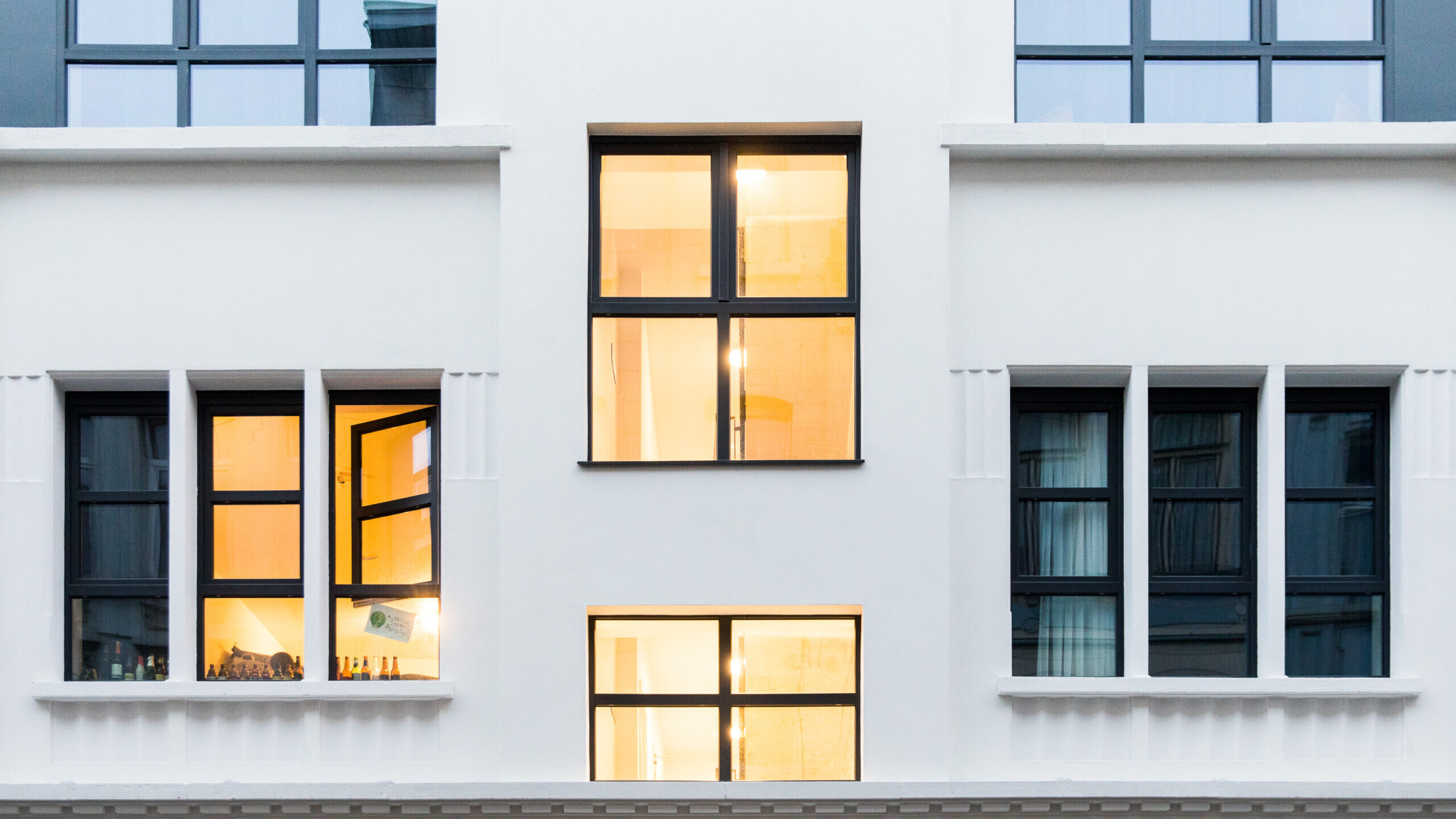
3. Execution and follow-up of your facade and insulation project
3.1 When will the work on my facade start?
The start of work on your facade depends on several factors, including weather conditions, the preparation of the substrate, and the coordination of project schedules. We aim to start projects within weeks of completing the quotation and final approval of the plans. This time frame may vary depending on the complexity and size of the project.
3.2 What is the expected duration of a facade renovation with brick slips or crep?
The time required for a facade renovation can vary considerably. A standard project for applying stone slips or crepi to an average home can take 2 to 3 weeks, depending on the surface area and weather conditions. Complex projects with extensive preparations or additional architectural adjustments may take longer. We provide an estimated timeline after our initial assessment of the site and project needs.
3.3 Who will monitor my project?
Each project is assigned to an experienced project manager who specializes in facade renovation. This project manager is responsible for overseeing daily progress, coordinating work between different teams, and being your direct point of contact throughout the project. Our project managers are thoroughly trained to ensure the highest quality standards and ensure your satisfaction.
3.4 How is quality guaranteed during implementation?
Quality control is a continuous process that is integrated into every project. This includes regular inspections and audits by both the project manager and independent quality controllers to ensure that all work meets statutory standards and our own strict quality criteria. We only use high-quality materials that meet European standards for construction products and our craftsmen are certified and experienced in their respective disciplines.
3.5 What factors can delay the start of my facade project?
Factors that can delay the start of facade projects include unforeseen weather conditions, delays in the delivery of materials, and unexpected problems during the substrate preparation phase. We actively communicate with you to minimize any delays and provide alternative solutions.
3.6 How do you ensure safety on the construction site during facade work?
Safety is our top priority. We implement strict safety protocols that meet national safety standards, including regular safety training for our teams, the use of appropriate personal protective equipment, and the establishment of secure work zones to protect both employees and passersby.
3.7 Can I continue to live in my home during the renovation work?
In most cases you can continue to live in your home during the facade renovation work. We plan our work carefully and set up systems to minimize inconvenience. However, for large projects or for certain specific activities, temporary relocation may be necessary, about which we will communicate clearly in advance.
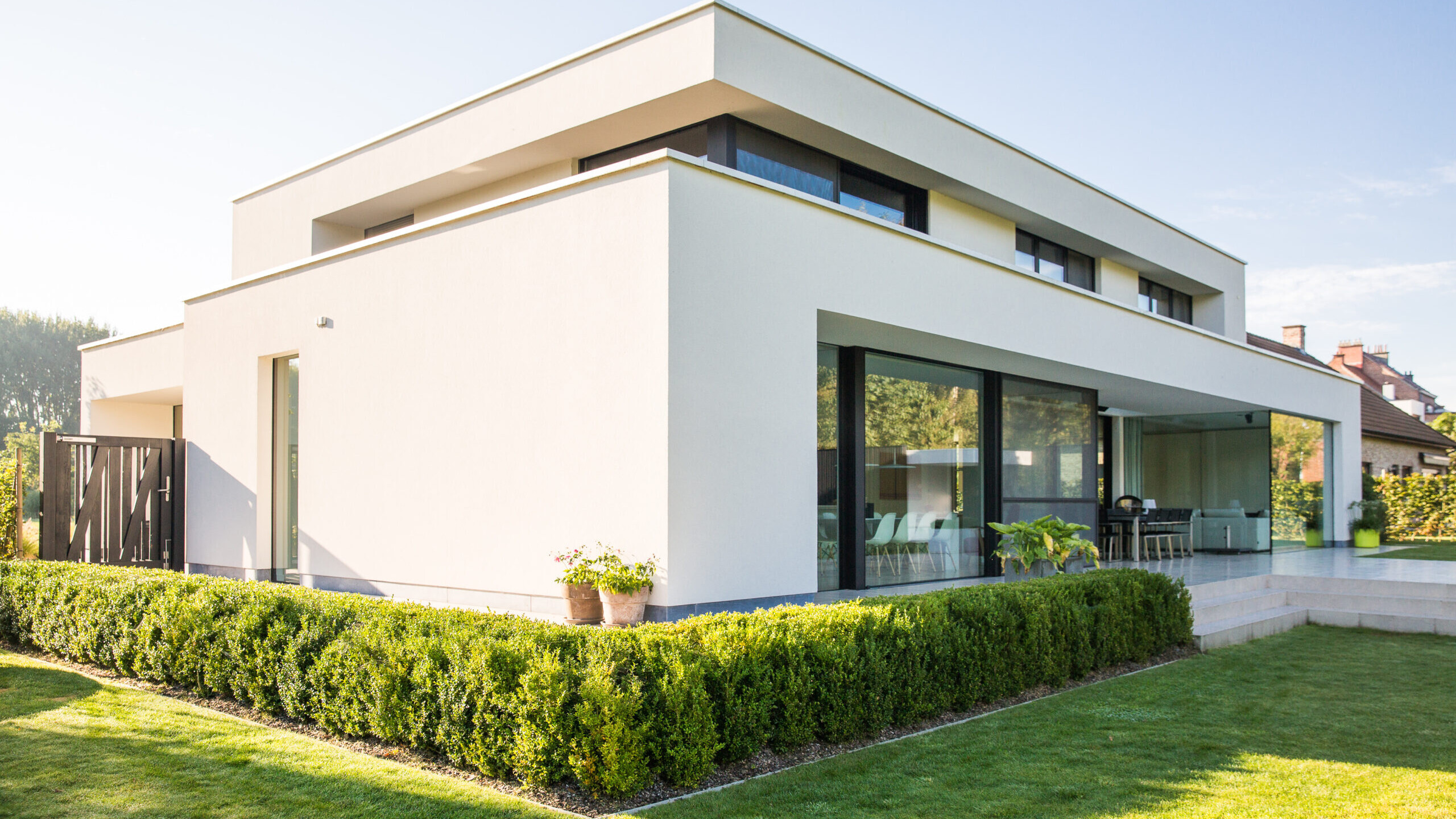
4. Costs and premiums for insulation
4.1 How much does a facade renovation with brick slips or crepi cost?
The costs for facade renovation vary considerably depending on the choice of materials, the size of the project, and the specific conditions of your property. On average, the costs for installing crepi are between €60 and €80 per square meter, while combinations with insulation can increase the costs to €80 to €110 per square meter. Stone slips can range from €100 to €150 per square meter, depending on the type of stone and the complexity of the pattern. A detailed quotation is provided after a technical evaluation and is fully adapted to your specific situation.
4.2 What financial support or subsidies are available for facade renovation?
In Belgium there are various premiums available for installing wall insulation. Below you will find an overview of the various financial benefits. Last update: May 1, 2023.
- My Renovation Premium: This premium combines former energy premiums and offers up to 35% back on the investment, depending on the energy savings achieved.
- Total renovation bonus : Depending on the number of improvements carried out, this bonus can range from €625 to €4,750.
- EPC label premium: Amounts vary depending on the energy label achieved after renovation, with premiums up to €5,000.
- Reduced VAT rate: For homes older than 10 years that are insulated, a reduced VAT rate of 6% applies instead of 21%.
All premiums for wall insulation in 2023 have their own conditions, amounts and application procedures. Would you like to discover which premiums your insulation project is eligible for? Then use the premium search robot for energy premiums in Flanders ( VEKA (energiesparen.be) or get advice from our experts!
4.3 How many cm of facade insulation do I need to qualify for a premium?
- Flemish Region: with an insulation system with the WILLCO Neopor Insulation Board 032 of 10 cm thickness you achieve the minimum required R-value of 3.00 m².K/W. More information can be found via mijnverbouwpremie.be
- Brussels Capital Region: with an insulation system with the WILLCO Neopor Insulation Board 032 of 12 cm thickness, you achieve the minimum required R-value of 3.50 m².K/W. More information can be found via renolution.brussels
- Walloon Region: with an insulation system with the WILLCO Neopor Insulation Board 032 of 12 cm thickness, you achieve the minimum required R-value of 3.50 m².K/W. More information can be found at energie.wallonie.be/fr
4.4 From energy label F to A: how do you go about renovating a house?
Given the recent antics of energy prices, more and more people are looking for solutions to save money, because the best energy is the one you don’t use and therefore don’t have to pay for. It goes without saying that renovating a home with a poor energy score is useful.
Anyone who wants to bring the energy score from label F to A should approach this sensibly, because confusing promises from various providers of ‘miracle solutions’ do not make the choices easy or the renovator any smarter. One fact is certain: you make the greatest gains by insulating exterior surfaces.
The December 2022 issue no. 680 of Test Aankoop (p.20-23) contains interesting information for those who want to know the ins and outs. An example: a home in the Flemish Region has been overhauled on the basis of an energy audit with the intention of moving from energy label F to A, which results in a saving of almost 90% in energy requirements. Three quarters of this is the result of interventions on the exterior surfaces: roof insulation, facade insulation, replacement windows and doors and floor insulation above the crawl space.
According to WTCB, now Buildwise, insulating the outside of your home (ETICS) is the most efficient. It offers cost-saving benefits, a new look for your facade, and you do not lose any living space. A quick calculation shows that in an average situation the payback period for thermal facade insulation is less than 7 years. In many cases even shorter!
4.5 Do I have to apply for a building permit if I want to insulate on the outside?
You usually need a permit for work on the facade if the appearance of your street changes (e.g. painting or new cladding).
You usually do not need a permit for work on the side or rear facade if no stability works are required, such as installing an extra foundation.
NB! Whether you actually need a permit or not may differ per region. Much depends on the type of facade work that is carried out. Tip: always check with your municipality or city, as the rules may be stricter than those of the region! It is always the municipality or city that decides whether or not you need a permit for the facade work.
4.6 What are the long-term benefits of investing in facade insulation with crepi or brick slips?
Long-term benefits include significant energy savings, improved home values, increased living comfort, and reduced CO2 emissions, contributing to a more sustainable living environment.
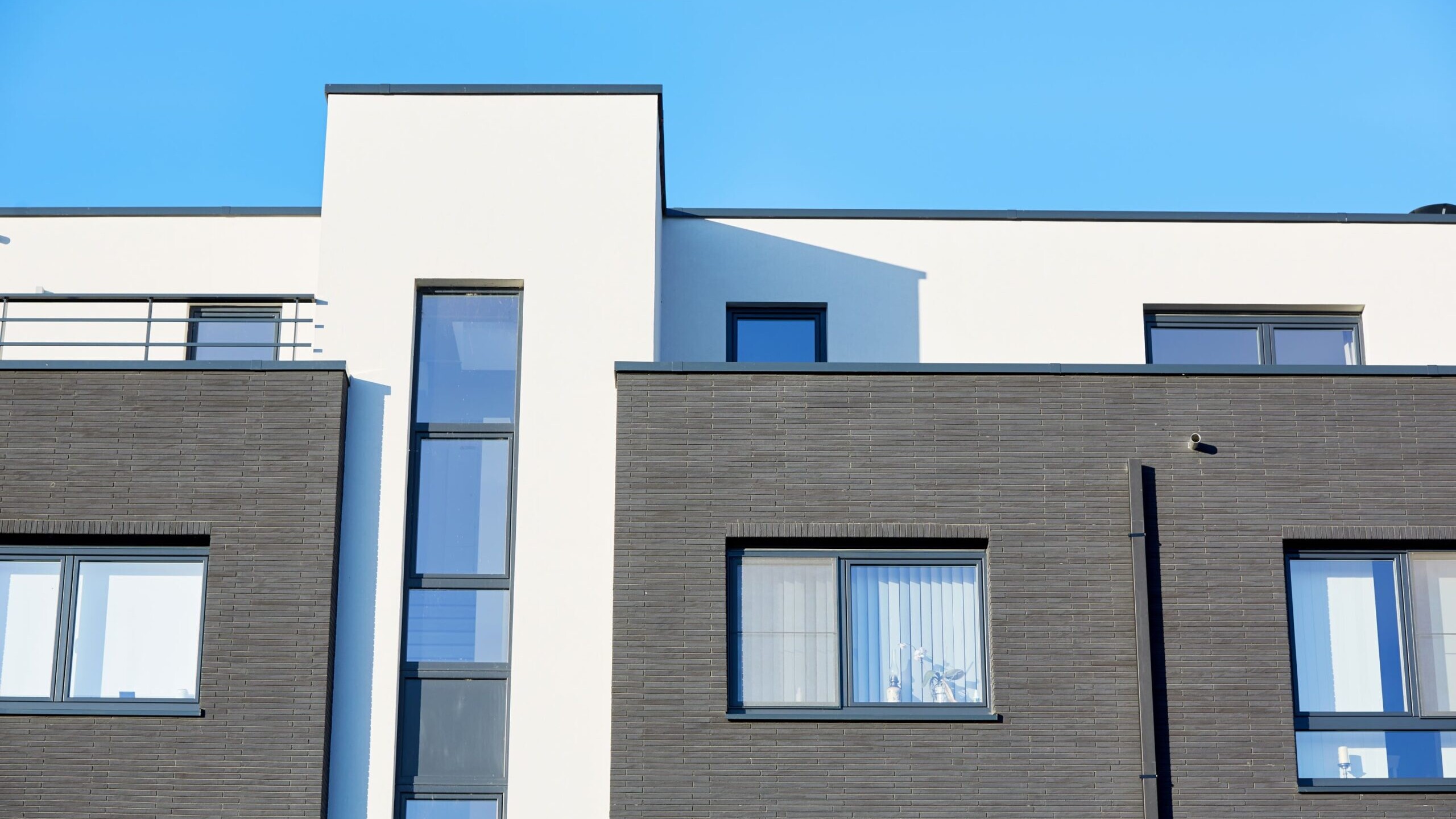
5. Maintenance and protection of your facade
5.1 How can I best clean my facade?
To maximize the lifespan of your cladding, regular maintenance is essential. For both crepi and brick slips, we recommend inspecting and cleaning the facade annually. Use soft brushes or a low-pressure water jet to remove dirt and grime. Avoid using harsh chemicals that can damage the finish. For stubborn stains, you can use a mild cleaning agent or a cleaner specially designed for cladding.
5.2 What techniques are recommended for removing graffiti from crepi and stone slips?
When removing graffiti, it is important to act as quickly as possible. Use specially developed graffiti removers that are suitable for the type of facade cladding. Gently rubbing with a brush and rinsing with plenty of water can be effective. For larger areas or stubborn cases, consider hiring professionals who use environmentally friendly removal methods.
5.3 Does a crepi get dirty faster than a brick?
The degree of contamination with a crepi or a brick is the same. The difference is in the texture of the substrate and the porosity of the material. A brick has a stone motif with a surface in relief and is very porous. The stone retains a lot of water and therefore does not dry quickly, which means that a dirty brick is less likely to be noticed. A crepi, or also called decorative plaster, has a flat texture compared to a brick, which means that dirt is noticed more quickly. The color of the decorative plaster and brick also play a major role in noticing dirt on the facade. A white brick becomes dirty just as quickly as a white decorative plaster facade.
5.4 Does crepi not tear easily?
No, a decorative plaster is elastic and does not tear easily. Everything depends on the surface and the design. An insulation system better absorbs the effect between different substrate materials (concrete, metal, wood, etc.). The risk of cracks is therefore minimal.
Good execution according to the rules of the art is also very important to prevent cracks.
5.5 How do I attach light objects to my facade, such as a doorbell or lighting?
An exterior facade insulation system consists of a closed system with a thermal insulation layer. It is not permitted to simply pierce this insulation layer with a standard plug, due to the risk of moisture infiltration.
Light objects such as a doorbell, a nameplate or a house number can be attached with a special adhesive kit. This is a simple and quick solution! To attach heavier objects, such as a letterbox or outdoor lighting, the use of a specially designed spiral plug is recommended. Such a plug can carry up to 5 kg. It is important to always consult the technical specifications for correct application.
5.6 How do I attach heavy objects to my facade, such as sun blinds or a balustrade?
Before attaching heavy objects such as sun blinds or balustrades, it is wise to discuss this with us in advance. At InstaCrepi we use special mounting elements to ensure an easier and more secure attachment. These elements are integrated into the insulation boards and are available in different types, depending on the weight and the forces acting on the attachment point. We are happy to advise you on the right choice.
Have you forgotten to discuss something with us in advance? Don’t worry, we offer a solution with a specific mounting element that is suitable for retrofitting medium to heavy loads to our insulation system.
5.7 How do I repair damage to my brick slip or crepi cladding?
Small cracks or chips in brick slips can be repaired with color-matched fillers. For crepi, depending on the extent of the damage, patch repair with the same material may be necessary. Make sure the surface is clean and dry before making any repairs. Consult professionals for major repairs to maintain structural integrity and aesthetics.
5.8 Can I re-plaster/repaint an old crepi?
That’s certainly possible! Is your old plaster layer still in good condition? After thorough cleaning, InstaCrepi can provide the old plaster layer with a new layer of paint or protective coating. For optimal coverage, we recommend applying this new layer in two layers.
If cracks, bubbles are visible, the plaster layer crumbles or powder formation occurs, then the plaster layer is no longer in good condition. In that case, treatment or repairs are necessary. Contact InstaCrepi for professional advice and implementation.
Replastering is also an option. First, all loose parts of the old plaster are removed. After cleaning, we apply a new smoothing layer, making the old layer nice and even again and ready for further finishing. This can be done with a decorative plaster or smooth plaster, finished with a primer and a new layer of plaster in the grain size and color of your choice.
aspects in advance with you to ensure smooth execution of the project.
5.9 How often should crepi be maintained and what are the best maintenance practices?
Crepi requires relatively little maintenance. It is recommended to clean the facade once every 2 to 3 years to prevent the build-up of dirt and algae. For areas with a lot of exposure to heavy pollution, it may be necessary to apply a protective coating that will help keep the facade clean.
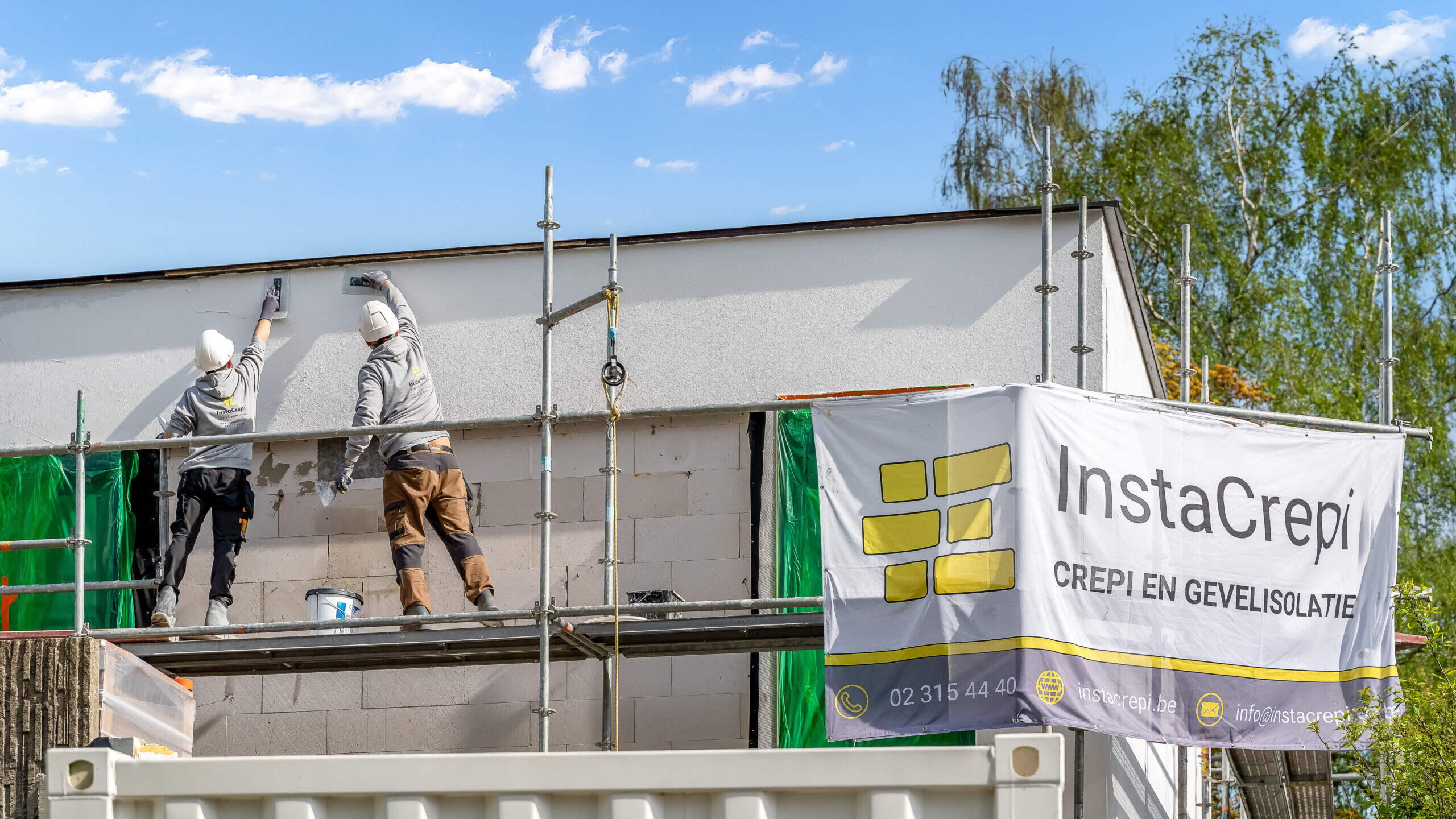
Transform your home with Instacrepi! Your expert in crepi and facade insulation.
Save energy and increase your comfort! Contact us today for a free quote and discover how we can make your home not only more beautiful, but also more sustainable.